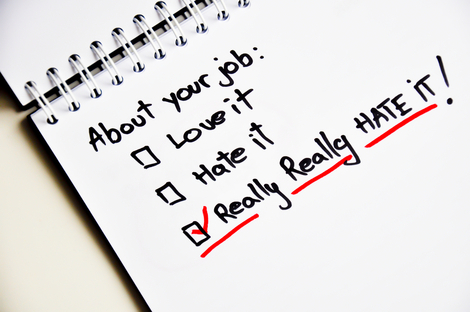
What’s Your Professional Pain Threshold?
Whether you realize it or not you have one – a professional pain threshold. It’s the upper level of tolerance for your current job. Consider it the final straw–the one that breaks the proverbial camel’s back.
Everyone’s threshold is different. We rarely know what the last straw is until suddenly – there it is. This means those around us at work also don’t know what will push us up to and even beyond our threshold. Most work associates, whether they are our manager, co-worker or even client, aren’t actively looking to thrust us towards our max pain-point. It just happens – and at times our own actions are the root cause.
As a career coach and recruiter, I work with many professionals who’ve reached their limit! I’ve learned the pain of job dissatisfaction is the most common reason for seeking a new opportunity and not bad management as many people believe to be the primary catalyst.
Sure, bad management or a bad boss can play into overall job dissatisfaction, but typically there’s more to it than that.
Most Common Points of Professional Pain
Culture Mismatch. Simply put – the firm’s values aren’t a match for your own. Long hours, little to no flexibility, lack of collaboration, different views on community involvement, even dress code can all have disastrous effects on job satisfaction.
Lack of Challenge/Meaningful Work. Doing the same thing, day in and day out, with little to no challenge or meaning and lack of opportunity to play a vital role. Let’s face it, the mundane is murder for motivation and satisfaction.
A Dead End. Running in place – going nowhere fast – with no upward career path opportunities.
Stagnant Salary. Being underpaid or suffering with a stagnant salary.
Poor Professional Development. A lack of training or support for continued professional development and learning. Whether you’ve been in your career a year or 30 years, the need to learn and grow is imperative. It keeps us at the top of our game, engaged and happy.
No Recognition. Praise – a verbal pat on the back – and regular acknowledgement of work well done builds trust, loyalty and happiness.
Lack of Leadership. Whether it’s micro-management or no visible management, poor leadership translates to culture chaos in the firm. Partners and management need to be accessible, model the firm’s values, and mentor and motivate at all levels.
Poor Communication. This often ties directly to poor leadership. Ineffective communication and unclear objectives require an exhaustive amount of time and energy be spent getting the information necessary to do the job. The result is frustration and even anger.
Work-Life Imbalance. A killer commute. Killer hours. A lack of family-friendly policies and a dim view of using vacation time are all key pain points. When work overshadows life, burn-out leaves you frazzled and fried.
It’s important for both the firm and the employee to understand these points of pain. Not all are the fault of the firm. For instance, if you’re considering a job that is an hour commute each way – you may be setting yourself up for high stress and irritation.
Equally important is the need to understand the values of the firm before accepting a position. (See: “Culture Clash: Find a Better Match”)
Hiring Partners also need to pay acute attention during the interview process to whether a candidate is a true fit for the firm and not just merely technically competent.
What to Do When You’re Done
If you’ve reached your pain threshold, you know it. Every day becomes a mental challenge to motivate yourself to go to work and be productive.
The pain is real. The struggle is real. It effects how you think, feel and act and not just at the office. It can affect your personal life, relationships and even your health.
It’s time to make a career move. Staying in a position that doesn’t meet your needs or make you happy is short-changing yourself and those close to you.
I talk with too many professionals who say they stayed at a firm too long – often out of fear. The fear of the job search. The fear of change. The fear of not finding something better. They’re now dealing with dissatisfaction and fear. A double- whammy.
Doing something, however, is always better than doing nothing. In fact, you’ll be amazed at how energizing and empowering it is to set your sights on the next goal and work to achieve it.
Working with a strong recruiter gives you an invaluable partner and guide through the search and hiring process. Defusing the fear, understanding a person’s values, guiding them to a culturally-correct fit and providing coaching and advice in advance of interviews provides irreplaceable insight and support.
The bottom line is once you set your sights on moving on you are able regain career control and curb the pain.
As a recruitment professional for nearly 20 years, I founded SterlingFreeman to help people achieve their career dreams in Public Accounting. Connect with me on LinkedIn.
